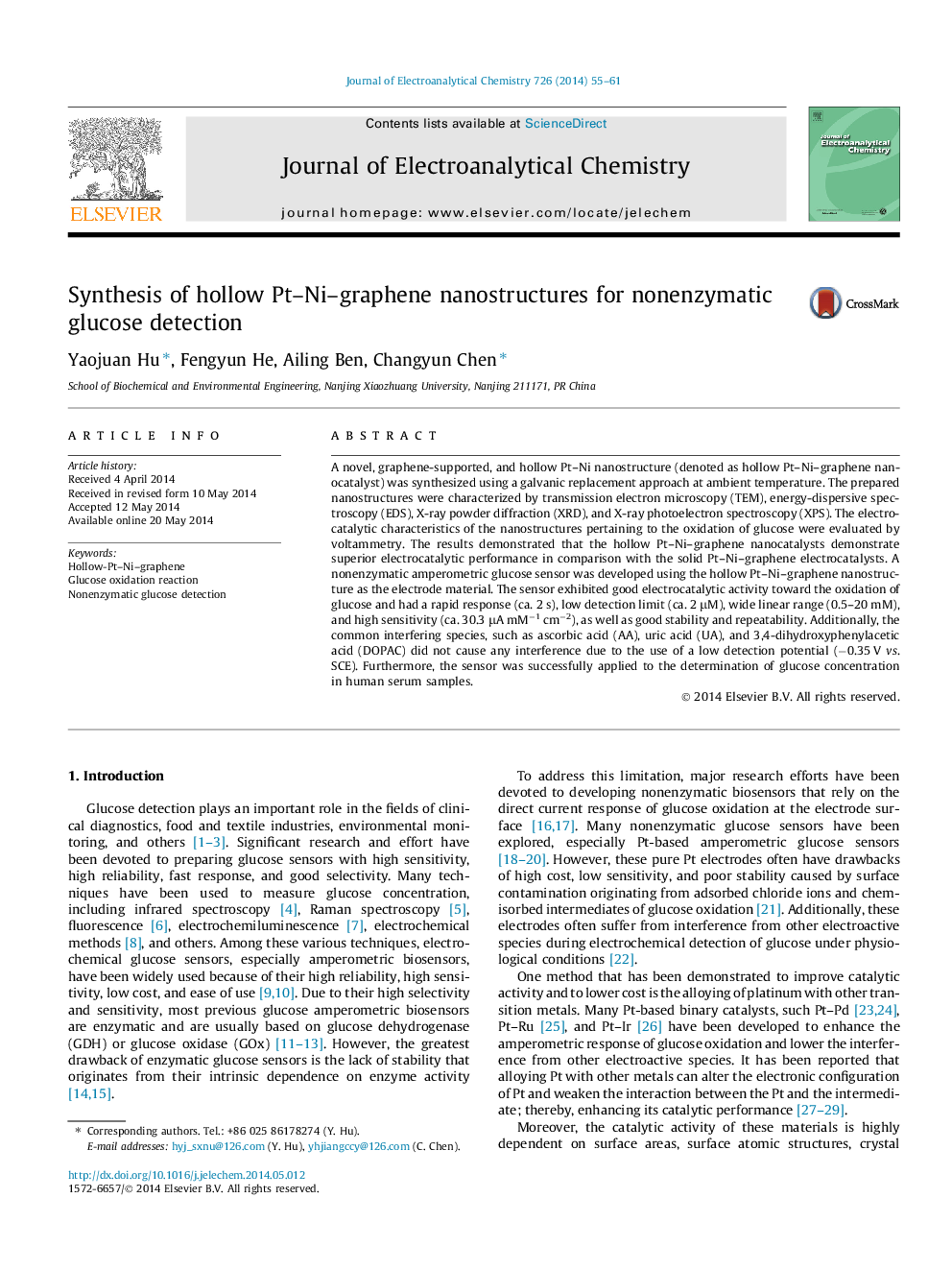| کد مقاله | کد نشریه | سال انتشار | مقاله انگلیسی | نسخه تمام متن |
|---|---|---|---|---|
| 218793 | 463219 | 2014 | 7 صفحه PDF | دانلود رایگان |
• Hollow-Pt–Ni nanostructure is synthesized by a facile approach.
• The nanostructure exhibits the superior electrocatalytic activity toward glucose oxidation reaction.
• The nonenzymatic glucose sensor based on the nanostructure exhibits excellent performance.
• The sensor can be used for quantification of glucose in real clinical samples.
A novel, graphene-supported, and hollow Pt–Ni nanostructure (denoted as hollow Pt–Ni–graphene nanocatalyst) was synthesized using a galvanic replacement approach at ambient temperature. The prepared nanostructures were characterized by transmission electron microscopy (TEM), energy-dispersive spectroscopy (EDS), X-ray powder diffraction (XRD), and X-ray photoelectron spectroscopy (XPS). The electrocatalytic characteristics of the nanostructures pertaining to the oxidation of glucose were evaluated by voltammetry. The results demonstrated that the hollow Pt–Ni–graphene nanocatalysts demonstrate superior electrocatalytic performance in comparison with the solid Pt–Ni–graphene electrocatalysts. A nonenzymatic amperometric glucose sensor was developed using the hollow Pt–Ni–graphene nanostructure as the electrode material. The sensor exhibited good electrocatalytic activity toward the oxidation of glucose and had a rapid response (ca. 2 s), low detection limit (ca. 2 μM), wide linear range (0.5–20 mM), and high sensitivity (ca. 30.3 μA mM−1 cm−2), as well as good stability and repeatability. Additionally, the common interfering species, such as ascorbic acid (AA), uric acid (UA), and 3,4-dihydroxyphenylacetic acid (DOPAC) did not cause any interference due to the use of a low detection potential (−0.35 V vs. SCE). Furthermore, the sensor was successfully applied to the determination of glucose concentration in human serum samples.
Figure optionsDownload as PowerPoint slide
Journal: Journal of Electroanalytical Chemistry - Volume 726, 24 July 2014, Pages 55–61
